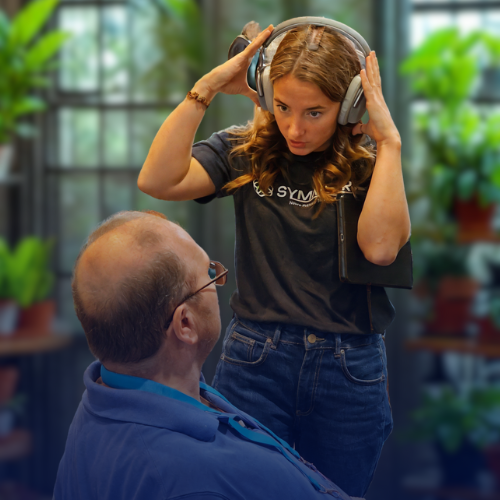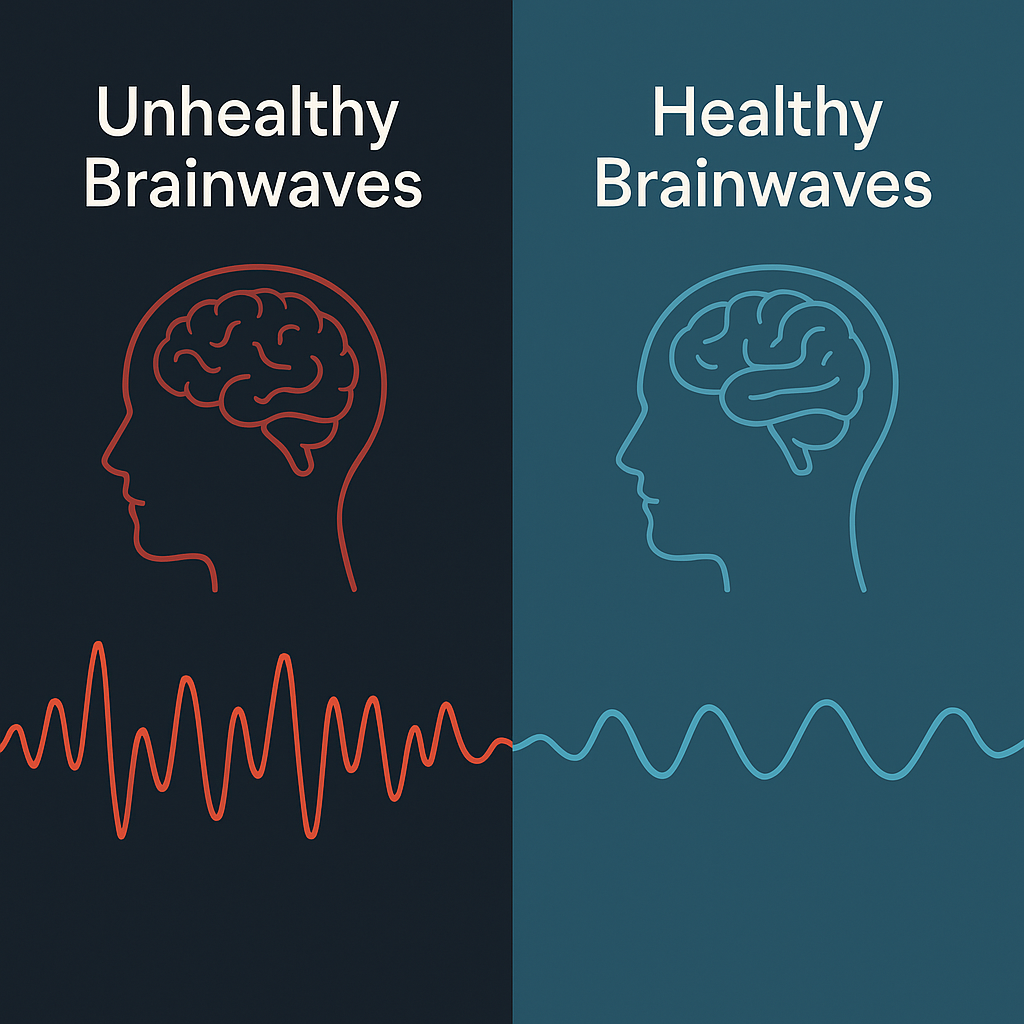The 2025 Study Said Neurofeedback Failed… They Were Wrong
Have you ever felt like your brain is sprinting a marathon while the rest of the world strolls by? For many children and adults with dyslexia, that’s a daily reality. It isn’t laziness or lack of intelligence—it’s simply that their brains process information differently.
Picture this:
- A 12‑year‑old stares at the same page for ten minutes, finally finishes, and realizes they can’t recall a single sentence.
- A bright professional rereads an email three times before a meeting, anxious they’ll miss something critical.
- Parents watch their capable child collapse in frustration after homework, asking themselves, why does learning feel like climbing a mountain every night?

Dyslexia is not one uniform problem. It’s a spectrum of brain differences, and every brain tells a different story:
- Reading and comprehension: Words may be decoded, but meaning slips away.
- Working memory and focus: After half a page, the mind drifts; progress feels painfully slow.
- Auditory processing and sequencing: Busy classrooms sound like static.
- Spatial awareness and organization: Left-right flips, messy desks, and constant double-checking.
Why the 2025 Review Called Neurofeedback “Underwhelming”
Earlier this year, a systematic review in Annals of Dyslexia examined 12 neurofeedback studies over 20 years. At first glance, its verdict seemed harsh:
Neurofeedback alone doesn’t consistently improve reading skills for dyslexia.
If you stopped reading there, you might think neurofeedback doesn’t work. But look closer, and the story changes—especially when you compare clinical research with what families experience at SYMMETRY Neuro‑Pathway Training.
What the Review Really Found
Most studies suffered from clear limitations:
- Tiny sample sizes: Only 10–25 participants
- Short duration: Often 8–12 weeks
- Generic protocols: Same theta/beta or SMR setup for everyone
- No long-term follow-up
- Minimal focus on phonological awareness—the beating heart of reading
Only 2 of 12 studies used qEEG-guided, personalized protocols, and those produced the strongest, longest-lasting results.
In short: neurofeedback wasn’t the problem. Generic neurofeedback was.
Why One-Size-Fits-All Fails
Imagine if every optometrist handed out identical glasses prescriptions. A few people might see slightly better, but most would still squint. That’s what early neurofeedback research did—one plan, same sensor locations, no individualization. Unsurprisingly, results were mixed, and critics called it “underwhelming.”
But when neurofeedback is created to match how a specific brain functions—its own communication patterns and rhythms—outcomes look very different. SYMMETRY Neuro‑PT builds plans based on each brain’s unique signals, so the brain learns to regulate itself more effectively, which improves reading, focus, and confidence.

What Actually Works: Personalized Brainwave Regulation
At SYMMETRY Neuro‑Pathway Training (SYMMETRY Neuro‑PT), every plan begins with a qEEG brain map—a detailed visual blueprint of your brain’s unique communication patterns. This map highlights:
- Areas that are overactive or underactive
- Slow waves that get “stuck,” making comprehension harder
- How well the two brain hemispheres share information
From that map, SYMMETRY Neuro‑PT creates a personalized brain training plan—as unique as your fingerprint. This plan helps the brain learn to better regulate, which means it can shift from being overwhelmed or scattered into a state that supports focus and calm learning.
Put simply, the brain practices working in healthier patterns. Over time, it naturally strengthens the pathways it needs for smoother reading, better memory, and easier attention. Because the plan is designed for your brain, progress feels natural, not forced, and builds lasting change.

Deep Dive Into the Research
The studies behind SYMMETRY Neuro‑PT’s approach tell a powerful story.
In Nazari et al., 2012, 20 dyslexic students received 20 sessions of qEEG‑guided neurofeedback alongside language exercises. Researchers tracked spelling accuracy, reading engagement, and attention. Results: Students made clear gains in spelling and sustained attention, and teachers saw them volunteer for reading tasks for the first time.
Breteler et al., 2009 followed 18 learners for a full year using qEEG‑informed plans. Results: Reading comprehension rose steadily and remained strong six months after training ended. Parents described homework as faster, calmer, and far less frustrating.
Raesi et al., 2016 involved 30 participants using neurofeedback plus literacy reinforcement. Results: Students improved in phonological awareness, word recognition speed, and working memory, with benefits persisting in follow‑up assessments.Breaking It Down
These results matter because they highlight that brainwave regulation must match the individual brain. The 2025 review calling neurofeedback “underwhelming” focused on generic, one‑size‑fits‑all protocols. But when plans are built from each brain’s unique communication patterns—as SYMMETRY Neuro‑PT does—reading, focus, and confidence improve in ways families can see and feel.
Making It Relatable
Imagine a middle‑schooler who cried over every reading assignment, dreading homework each night. After a series of qEEG‑guided SYMMETRY Neuro‑PT sessions, she starts to process words more quickly, recalls what she reads, and finishes homework without tears. Soon she’s volunteering to read aloud, proud of her progress.
Picture an adult professional who came home exhausted every evening, frustrated after rereading emails and struggling through meetings. With SYMMETRY Neuro‑PT sessions, he can now read once, follow conversations with ease, and finish the day feeling alert instead of drained.
These real‑world stories illustrate the research in action: when brainwave regulation matches the individual brain, measurable and lasting change follows. This is how professionals can deliver solutions that genuinely help, and why the 2025 review’s conclusion doesn’t reflect what truly works.
What Success Feels Like
Picture this: A young student who once hid in the back of the classroom now raises her hand eagerly to read aloud. Homework that once led to hours of frustration and tears now ends in pride, and the shame and guilt she carried begin to fade.
In the workplace, an adult who used to reread the same email three times can finally breeze through tasks, join meetings confidently, and finish the day feeling capable. The embarrassment of struggling in silence lifts, replaced with a renewed sense of competence.

At home, families notice more than improved performance—they see the emotional weight lift. The cloud of self‑doubt gives way to confidence. Smiles replace tears, and daily effort finally leads to meaningful progress.
Understanding Brainwaves and Dysregulation
Brainwaves are the tiny electrical signals your brain uses to communicate and control everything you do—thinking, learning, and feeling. Each brainwave has a speed and pattern, and healthy brains naturally shift between these patterns depending on the task at hand.
When the brain gets “out of sync” or stuck in the wrong pattern, it’s called dysregulation. For example, if you’re trying to read but your brain is producing too many slow Delta or Theta waves (common in sleep or deep relaxation) instead of the faster Beta waves needed for focus, comprehension feels nearly impossible.

Neuroplasticity in Action
This is neuroplasticity—the brain’s natural ability to create and strengthen neural pathways through learning and repetition. Every SYMMETRY Neuro‑PT session gives the brain practice shifting into healthier rhythms, building new connections and reinforcing existing ones. Over time, reading, memory, and focus become smoother and more automatic—just like learning to ride a bike eventually becomes effortless with practice.
Compare & Contrast: Generic vs. Personalized Neurofeedback
Feature | Generic NF (Most Studies) |
| ||
|---|---|---|---|---|
| Same for all participants |
| ||
Target Areas |
|
| ||
Training Goals |
|
| ||
Integration | None |
| ||
Follow‑Up |
| Progress tracked and adapted over time | ||
Outcomes |
|
|
FAQ Highlights
Yes, especially when guided by a comprehensive approach through SYMMETRY Neuro‑PT that includes the brain map, a plan built for that unique brain, and continual case management to monitor and adjust the process.
A brain map shows where communication in the brain is working well, where it is overactive or underactive, and where it could use extra support. It allows SYMMETRY Neuro‑PT to create a plan unique to that individual, so the brain learns to regulate itself naturally.
No. Dyslexia looks different in every brain, so each plan is built to match that brain’s specific communication patterns.
References
- López‑Zamora, M., Porcar‑Gozalbo, N., Rodríguez Moreno, M., Cano‑Villagrasa, A., & Bandera Pastor, L. (2025). Efficacy of neurofeedback in the treatment of dyslexia: A systematic review. Annals of Dyslexia. Link
- Nazari, M. A., et al. (2012). qEEG-guided neurofeedback in dyslexia: Effects on spelling and attention.
- Breteler, M. H., et al. (2009). Long-term individualized neurofeedback improves reading comprehension in children with dyslexia.
- Raesi, A., et al. (2016). Personalized neurofeedback combined with literacy support yields lasting cognitive improvements.
- Kosto, D. (2025). From Trauma to Triumph: A Mom’s Mission with Neurofeedback. Kosto Associates.
